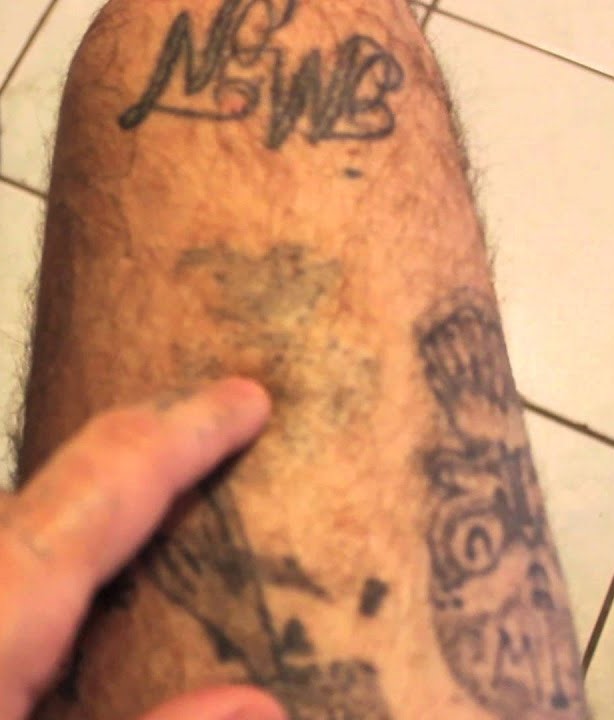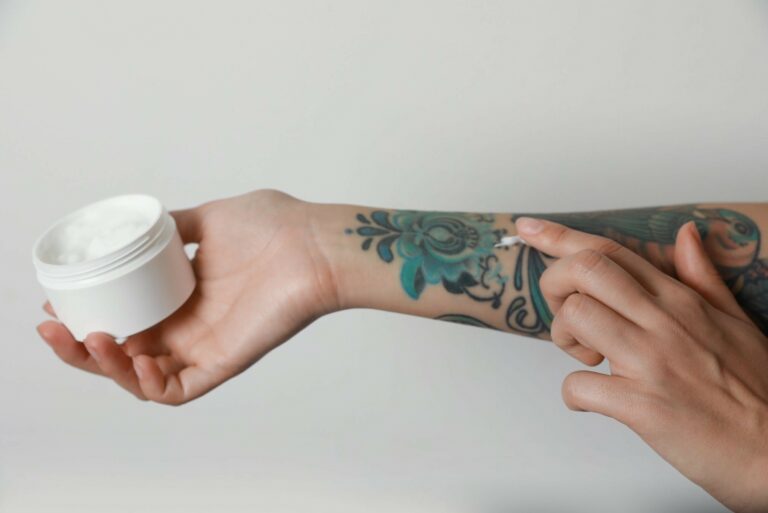Does Salabrasion Tattoo Removal Work?
For a long time, salabrasion was the only method that was used for removing tattoos. The other known method was dermabrasion. Both of these methods are very similar in the way they remove the tattoo. The only difference is the ingredient used in the process. Both are nonlaser tattoo removal techniques.
Salabrasion makes use of salt to sand down the skin and reach where the tattoo ink is present. The epidermis is the top layer and next is the dermis. Normally the tattoo ink is injected into the dermis layer. Therefore sanding has to be done into the dermis layer.
On the other hand, Dermabrasion makes use of abrasive devices like a brush wire, sterilized sandpaper, a diamond wheel, salt crystals, and other things to sand down the skin.
In salabrasion granular salt is used along with an abrasive device to gradually sand down the upper layers of the skin. It seems the more granular the salt, the lesser will be the pain.
Salt is used to rub and peel the skin instead of using brute force to remove the upper layers of the skin.
These tattoo removal methods are not used frequently these days.
However, these are inexpensive methods to remove tattoos at home without making a big hole in your pocket.
Some people do use these methods by using local anesthesia because the process involves sanding down the skin to the dermis level where the ink is located. This technique is extremely painful.
Steps For Salabrasion
While salabrasion is a technique that’s been used for decades however you need to know the exact steps before you attempt to do it at home. Given below are the steps that are followed by an expert doctor.
It seems the salabrasion process will only take 30-40 minutes. This process is going to be painful and therefore only those who can bear a lot of pain should attempt it.
Otherwise, you may be left with skin that has the tattoo partially removed and with some scars also.
The ingredients that you need for this method are as follows:
- Simple table salt
- Clean water
- An abrasive device like a wooden block wrapped in gauze.
- Antiseptic/antibiotic ointment
- Sterile gauze dressing
- Local anesthesia for administering before you begin the process.
Step 1
If the tattooed area has some hair then you need to take a razor and shave that area so that there is no hair left.
Step 2
Mix some salt with water and apply it to the tattoo area. Next use the abrasive gauze and rub it vigorously on the tattooed area. After some time the area will turn deep blood red in color. This is when you need to stop rubbing the abrasive device.
Step 3
Apply some antibiotic ointment to the abraded area and cover the area with a sterile dressing. This dressing is left in place for 3 days.
After 3 days the dressing is removed and salt is applied to the abraded area for several hours. Subsequently, the antibiotic ointment is applied again with the sterile dressing. Let the abraded area heal for 3 more days.
After the second 3-day period the dressing is removed. The skin will have a leathery look with a rough texture. In the next 5 to 6 days the dead skin over the tattooed area will separate from the healthy skin and fall off. As the dead skin falls some of the tattoo ink will also go away with the scabs.
As the skin heals, most of the tattoo ink will go away naturally. If it is a simple tattoo then you may get a clean skin after the first salabrasion treatment.
However, complex tattoos may invariably require several rounds of salabrasion treatment before the tattoo ink disappears completely.
What Are The Risks Associated With Salabrasion?
The No#1 risk with salabrasion is scarring of the skin. According to experts, it is quite possible that you may replace an unwanted tattoo with an unsightly scar. In some cases, there may be no scar formation but there may be wrinkling.
The second risk is the chance of the abraded area getting an infection. This is why it is important that good sterile equipment is used and a person with some experience does the job or guides you in the process.
Another risk is the chance of tattoo ink spreading to other places in the body and causing other problems like allergic reactions. This can happen if salabrasion removes larger chunks of ink leaving behind tiny ink particles. Your body is likely to move these tiny particles automatically and this may result in an allergic reaction.
Are There Any Salabrasion Success Stories?
According to one German study by the national institute of Health database, salabrasion produced acceptable to good results without scarring of the skin. However, there was a wrinkling of the skin.
Another professional method used a gun-like device with a saline solution to draw up the ink by puncturing the dermis. This is the reverse of getting a tattoo done. It seems this method heals in 6 to 8 weeks and produces acceptable to good results.
Conclusions
While Salabrasion is surely a painful process for tattoo removal but it has definitely produced acceptable results when it is done properly by using sterile equipment and correct procedure to minimize risks.
It is best to do this procedure with the help of experienced professional help.
Of course, the cost of this method is much less compared to laser.
References
Laser Tattoo Removal: A Clinical Update – PMC (nih.gov)


